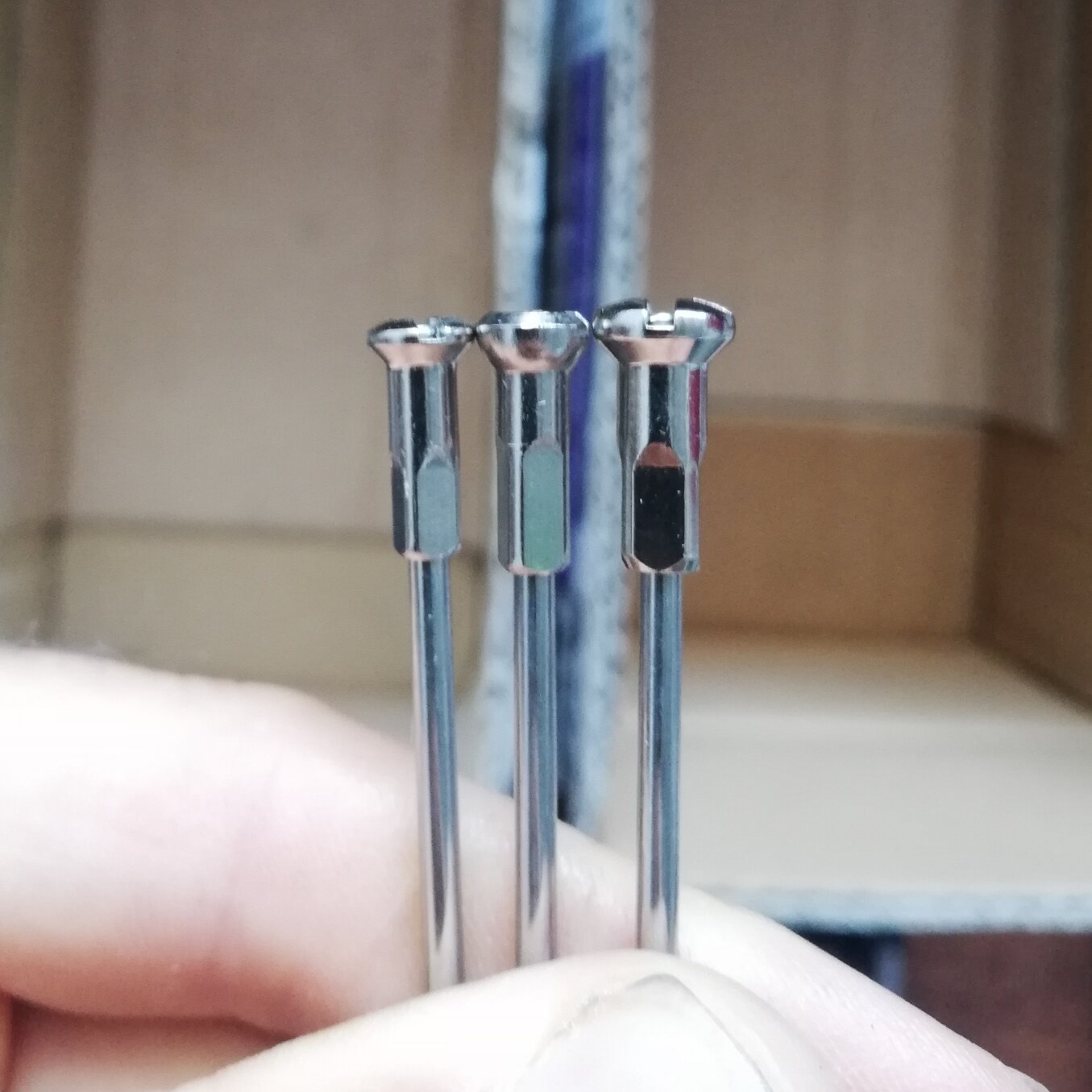Nipple and rim compatibility
How well do you know your nipples? OK, we can stop laughing now. For a bicycle wheel to be strong and reliable, the nipples need to have a good fit with the spoke and the rim. Most rims are drilled for 14g spokes with rim holes that are between 4.2mm and 4.5mm in diameter. But there is variation between manufacturers. A rim hole needs to be larger than the body of the nipple to allow it to pivot at various angles when laced in the wheel. If the rim hole is too tight, the spoke will bend as it exits the nipple and potentially create a stress riser on the spoke thread. Rim manufacturers (like Ryde) anticipate a nipple’s angle by directionally drilling their rims so the nipple does not need to pivot. In addition to this, if the rim holes are too large, the rim becomes materially weakened and stress cracks may form around the spoke holes. We aim for rim holes that are approximately 0.5mm larger than the body of the nipple, which we find optimal for allowing the nipple to pivot without causing damage.
So what about load bikes and ebikes, which tend to use heavier 13g and 12g spokes? In this context we find a much greater range of rim hole sizes, ranging from between 4.3mm and 5.5mm in diameter. The bike industry loves to keep us on our toes! To accommodate this problem, Sapim have innovated a range of 13g nipples to suite different rim drillings. Pictured here, from left to right, are three different 13g nipples made by Sapim: a 13g reduction nipple; a 13g standard polyax nipple; and an oversized 13g nipple. One of these options should be a good fit for almost any ebike or cargo bike wheel you find yourself working on. But please remember that due to the reduced material thickness of the 13g reduction nipple, it is more susceptible to deforming at high spoke tension. A high quality and well-fitting spoke wrench is of critical importance when working on any wheel, and especially if working with the reduction nipples. To help you choose the right nipple, we provide detailed width measurements for our range of nipples in our online store.
From left to right: a 13g reduction nipple, a standard polyax nipple, and an oversized 13g nipple.
